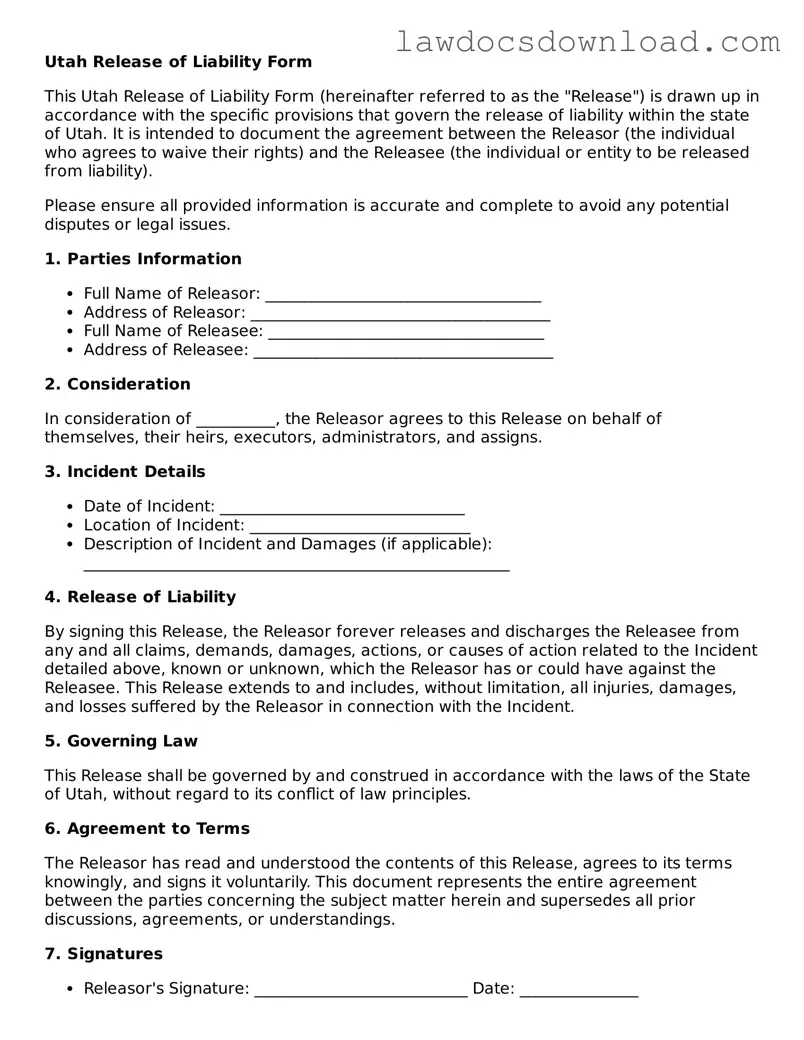Utah Release of Liability Form
This Utah Release of Liability Form (hereinafter referred to as the "Release") is drawn up in accordance with the specific provisions that govern the release of liability within the state of Utah. It is intended to document the agreement between the Releasor (the individual who agrees to waive their rights) and the Releasee (the individual or entity to be released from liability).
Please ensure all provided information is accurate and complete to avoid any potential disputes or legal issues.
1. Parties Information
- Full Name of Releasor: ___________________________________
- Address of Releasor: ______________________________________
- Full Name of Releasee: ___________________________________
- Address of Releasee: ______________________________________
2. Consideration
In consideration of __________, the Releasor agrees to this Release on behalf of themselves, their heirs, executors, administrators, and assigns.
3. Incident Details
- Date of Incident: _______________________________
- Location of Incident: ____________________________
- Description of Incident and Damages (if applicable): ______________________________________________________
4. Release of Liability
By signing this Release, the Releasor forever releases and discharges the Releasee from any and all claims, demands, damages, actions, or causes of action related to the Incident detailed above, known or unknown, which the Releasor has or could have against the Releasee. This Release extends to and includes, without limitation, all injuries, damages, and losses suffered by the Releasor in connection with the Incident.
5. Governing Law
This Release shall be governed by and construed in accordance with the laws of the State of Utah, without regard to its conflict of law principles.
6. Agreement to Terms
The Releasor has read and understood the contents of this Release, agrees to its terms knowingly, and signs it voluntarily. This document represents the entire agreement between the parties concerning the subject matter herein and supersedes all prior discussions, agreements, or understandings.
7. Signatures
- Releasor's Signature: ___________________________ Date: _______________
- Releasee's Signature: ___________________________ Date: _______________
Notarization (if required):
This document was acknowledged before me on _______________ (date) by ________________________________________ (name(s) of the individual(s)) who are personally known to me or have produced ______________________ (type of identification) as identification.
______________________________________
Signature of Notary Public
My commission expires: ___________________
